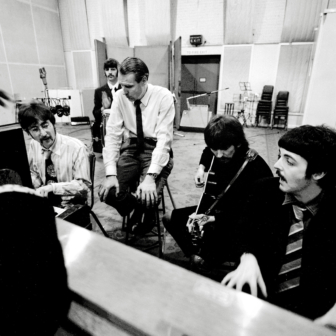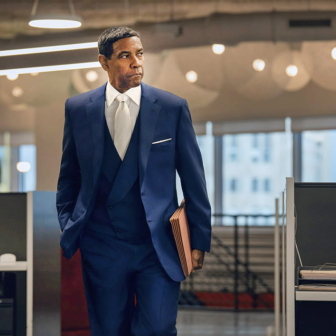If you thought Beatlemania was a mid-twentieth-century phenomenon, think again. At the end of 2013, I wanted to write about the second volume of The Beatles at the BBC, so I kept the CDs in my car for a couple of weeks in order to listen on repeat. The side effect was that my three-year-old daughter became a Beatles fan, calling out requests from the back seat: “Play ‘Yeah, Yeah,’ Daddy!”
Eighteen months on, her enthusiasm has only increased. She asks for Beatles songs as lullabies and complains when I don’t know all the words. She does, and she can also tell you the order of the tracks on several of their albums. She teases her mother by asking innocently, “Who’s singing this song?”, only to scoff when my wife gets the answer wrong. Like many Beatles fans, she has her favourites. It used to be Ringo; these days, it’s John Lennon, whom she refers to as Johnny. We have yet to address the fact that someone shot Johnny.
Help!, the Beatles’ fifth album, is her current favourite and we have listened to it together many times of late. It was released fifty years ago this week, ostensibly as the soundtrack album to the Beatles’ second feature film directed by Richard Lester. Their first, A Hard Day’s Night, had been a charming if largely plotless film (fans chase the Beatles as they prepare for a television appearance) beautifully shot in crisp black and white; in contrast, the big-budget Help! was filmed like a Bond movie on locations in the Bahamas and the Austrian Alps, and it felt overblown. Still, if the film itself hasn’t worn well, the often-overlooked album has, and Johnny is very much its star. Apart from Paul McCartney’s “Yesterday,” which is one of those Beatles numbers that seems to require its own category, the best songs on Help! are all by Lennon.
Because two of the Beatles are dead and the others in their seventies, it is easy to forget how young they were. When they disbanded, they were all still in their twenties. McCartney was twenty-two when he composed “Yesterday.” Singers’ voices continue to develop in their twenties, and one of the things that is most striking about Help! is Lennon’s singing. Always thinner than McCartney’s, the timbre of Lennon’s voice grew increasingly adenoidal, but here, aged twenty-four, he was in his vocal prime. On a few of the songs (for instance, “You’re Going to Lose That Girl”) he also produces his best falsetto singing, more often a McCartney calling card.
The overwrought rhyme scheme of “It’s Only Love” means that it isn’t a complete success, and Lennon knew this, even at the time. You can hear him mocking his own lyrics in the second verse as he sings, “Just the sight of you makes night time bright.” All of which is a pity, because the song has a good tune, with a very good chorus, and Lennon’s voice finds all the emotional vulnerability in it. The sixties rocker Gary U.S. Bonds recorded a version on Dedication, his Springsteen-produced comeback album of 1981, that somehow made light of the song’s infelicitous diction and showed only its strengths.
“You’ve Got to Hide Your Love Away” is often called Dylanesque, yet while it may share its strummed acoustic guitar, folkloric 6/8 (or 12/8) metre and the key of G major with “The Times They Are A-Changin’,” that’s about the extent of the similarity. In terms of lyric content, the closest Dylan songs to “You’ve Got to Hide Your Love Away” are on Blonde on Blonde, and that was still a year off.
Between them, A Hard Day’s Night and Help! were responsible for what are arguably the Beatles’ four most accomplished pop hits, and the two on Help! find Lennon in rare songwriting form. “A Ticket to Ride” is, for me, the greatest Beatles single of them all, which is a big call, I understand. But there’s that direct if elusive lyric (what exactly is a “ticket to ride”? ride what?), George Harrison’s ostinato guitar hook, the wonderful hemiolas (3:2 rhythms) of Ringo’s tom-toms, and, above all, Lennon’s vocal lines, now strident, now yearning, now thrillingly falsetto in the up-tempo coda. Lennon referred to “Ticket to Ride,” more than once, as an early version of heavy metal, and certainly the relentlessness of the song bears that out. It was also a good minute longer than any previous Beatles single.
And then there’s “Help!” itself, which Lennon later said he felt should have been a much slower and more soulful song. The jazz singer Claire Martin sang a slow version with Noel Gallagher (no less) on her 1999 album Take My Heart, but it doesn’t have that astonishing opening – an out-of-the-blue, sped-up version of the chorus we have not yet heard – because a slow version of the song doesn’t warrant it.
The Beatles’ “Help!”, which will turn out to be in the key of A, starts in a panic (“Help! I need somebody”) in harmonically remote B minor, cranking itself up via G major (both these chords have added sevenths) to the dominant chord of E and finally the tonic A. Not that it sounds like the home key, until the first verse kicks in. In fact this opening chain of thirds is a typical Beatles chord sequence, but coming in advance of an established tonic it is magnificently disorientating. And it has nothing to do with American blues or rock and roll.
In addition to “Yesterday,” there are some other good McCartney songs on Help!, along with (for the first time) two by Harrison and (for the last time) two covers – Ringo singing the Buck Owens hit “Act Naturally,” and Lennon’s blistering assault on “Dizzy Miss Lizzy,” or, as my daughter calls it, “Busy Miss Lizzy.” But it is Lennon’s own songs that make this a classic album.
If you have a five-year-old Beatles fan in your home, you’ll require no excuse. But if you don’t, I recommend you take this fiftieth anniversary as your signal to reconsider Help! •




